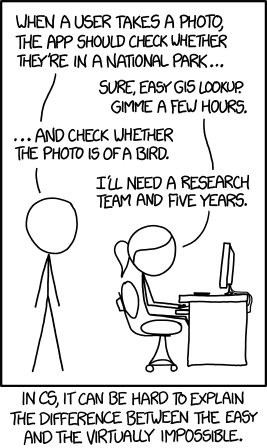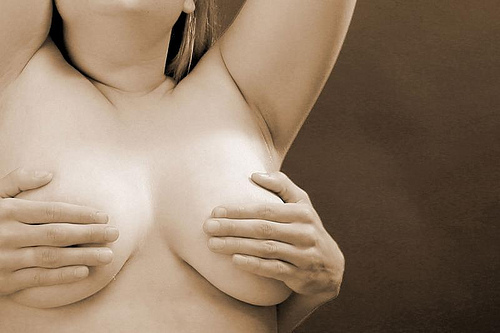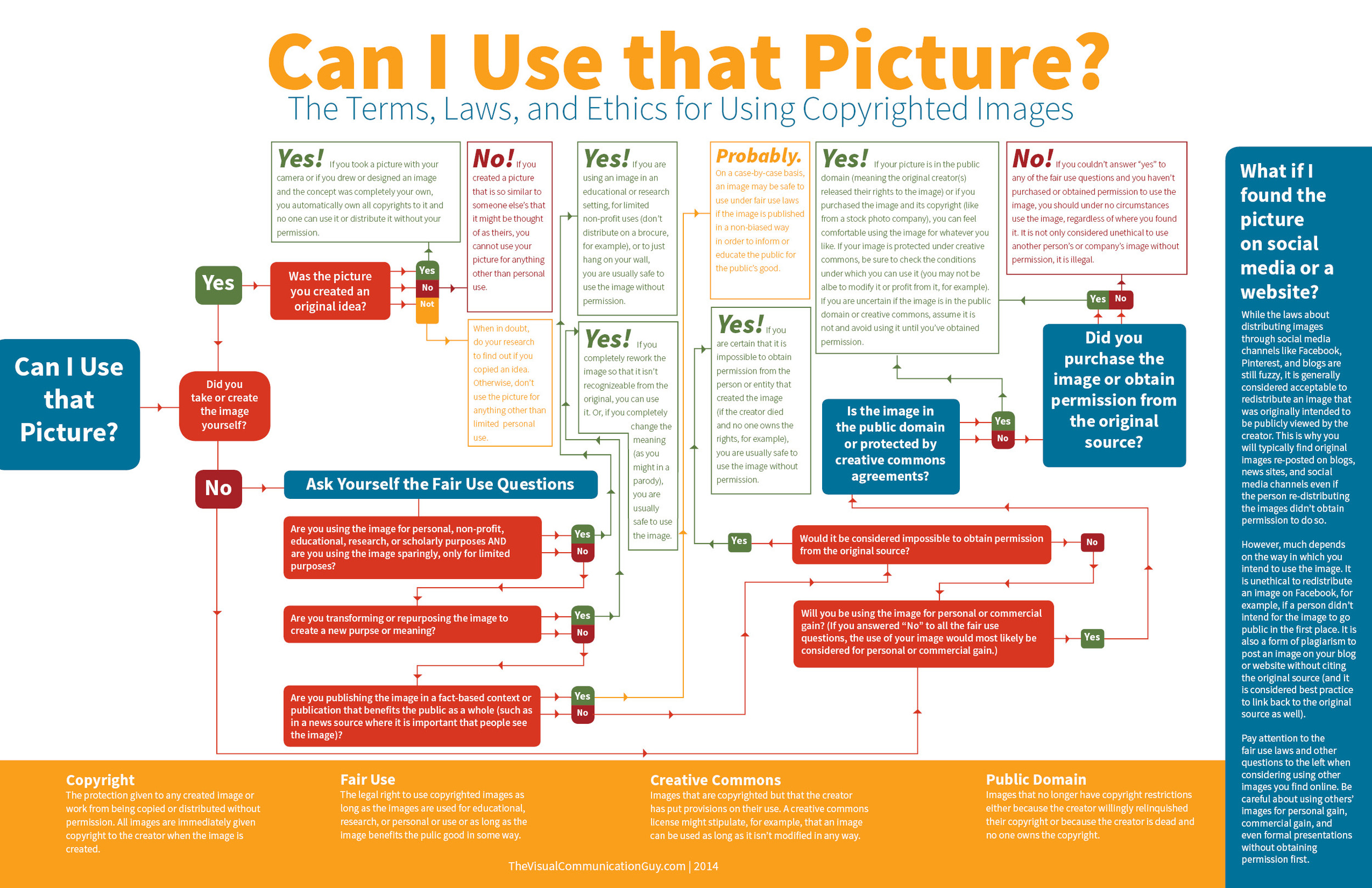Can we rely on an algorithm to turn up images that we think are beautiful? And do we actually want it to?
The iPhone's camera has come a long way, baby
Want better Terms and Conditions? Ask for them!
The sad farewell to IdeasTap is a sad indictment of arts funding in the UK
The Future of Lytro
Photography? Pah, this is CES!
I've been to CES quite a few times now, and I can't help but notice that photography is starting to be less and less of a focus for the show. To wit: This year, like many years before, the PMA is hosting... well, in their own words, "Digital Imaging/Photography Exhibits and Sessions, presented by PMA, at 2015 International CES".
EyeEm brings new editing and learning tools to its app
It's been a week of updates to our image-sharing programmes on social media. First Facebook introduced an auto-enhance feature, which will apply the filters that its algorithms calculate are most appropriate for your photos. Then Instagram unveiled five new filters, its first in two years. Now it's the turn of EyeEm, which brings a gaggle of new filters, fine-grained control over their application, and a new feature called Open Edit. The theory behind Open Edit is that it lays bare the post-processing path that a photographer followed to create an image, from the original to the final version. Each crop, tweak, and nudge is set out in a timeline that's made visible to the rest of the EyeEm community. If you see something that you like, you can apply the same edits to your own photos with one tap.
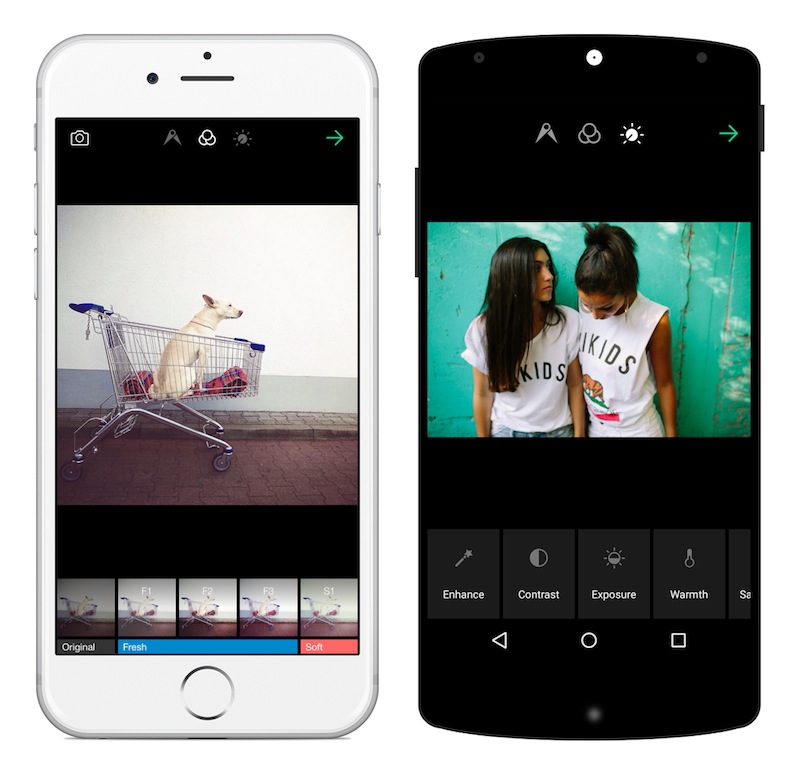
Right now, only certain photographers have the ability to open up their edits to the community, but it's something that will be rolled out to all members in time. The EyeEm team hopes that this open deconstruction of people's photos will lead to a more collaboratively minded community and one that can learn from each other and share their skills.
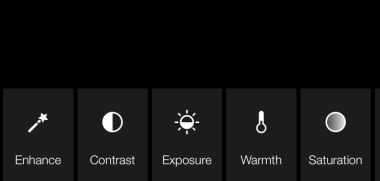
Can I see what EyeEm is trying to accomplish with Open Edit? Yes, definitely. Sometimes I do look at a photo and wonder precisely what sort of magic the photographer wove in order to create that particular effect. But at the same time, I'm not completely sold on it. The mystery and the secret behind someone else's photos are part of their appeal. Having the edits revealed to you can feel a little like the illusion of a magic trick being shattered when you know how it works. My curiosity means that I want to know, but the romantic in me appreciates the mystique.
From a teaching and learning perspective; I love EyeEm's enthusiasm to allow its users to share their knowledge. But I think that by going one step further, they could make this a much more valuable learning tool. How much people will actually learn from being able to see and apply other people's edits to their own photos will depend hugely on how much they're prepared to engage with the editing process and observe the kinds of impact each adjustment makes. Experimentation is such a valuable part of learning that just being able to apply someone else's workflow to your photos feels as if there's an important step in the process that's being skipped. It's not just about the what that you do to your photos, it's also about the why.
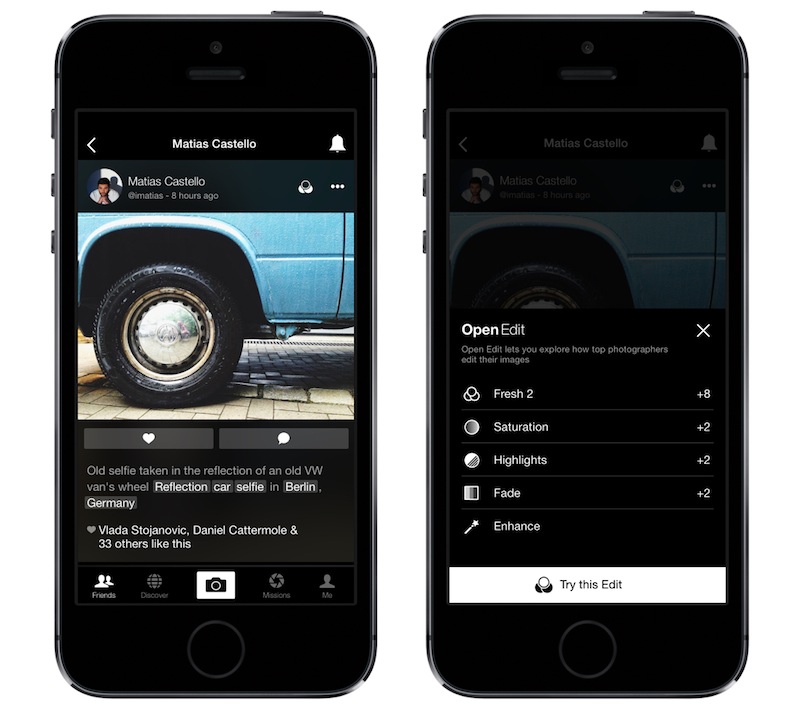
Bring a bit more dialogue to the experience—underpin the action with some explanation—and I think it could really work. Still, lots of people seem to be very excited by EyeEm 5.0, so perhaps I'm the one who's missing the trick here.
Let me know what you think.
You can download EyeEm 5.0 here.
The amazing turn-around of Sony cameras
I was reading through some of my earliest photography articles on this very blog - some of the oldest ones go back to 2004 - and one of the articles I stumbled across was 'how to choose a compact camera'. In it, I'm making a bold claim: "Choose Canon, Nikon, or Olympus, and you can't really go wrong. If I were you, I'd stay away from Sony, however". My argument - made about seven years ago, mind you - is as follows: 'Would you rather go with a camera manufacturer who's turned to electronics, or an electronics manufacturer who's having a go at creating cameras'? Well, let me be the first to announce that I'm currently eating those words, with a nice side-helping of humble pie.
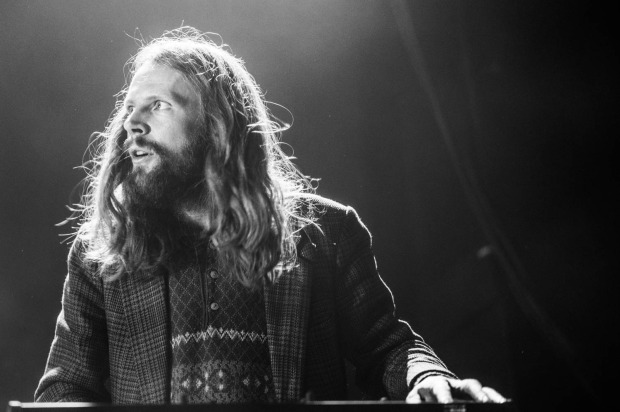
You see, exactly a year ago today, I took delivery of my Sony A7, and a Sony/Zeiss 55mm f/1.8 lens. At first, I was worried. Then, I was elated. And then... I sold all my Canon photography gear. The true fact is that the Sony A7 is one of the best cameras I've ever used - for my particular uses. Yes, there's better cameras for sports, concert, and fashion work... but I rarely shoot any of those. Instead, I'm a frequent traveller, and unless I have a light camera that's capable of taking awesome photographs, I'm in for a disappointment.
In my Travel Photography book, I'm excited about the Canon 550D (the newest entry-level Canon at the time) and Canon's 50mm f/1.4. In fact, in that book, I think I'm making a compelling case for travel photographers shooting with that very combo. If I were writing the book today, I'd have recommended my current setup. The A7 has a full-frame sensor - which doesn't matter nearly as much as you'd think. It also is incredibly good in low light - which does matter - and once you get used to its quirks, it's a fantastic travel camera all-rounder, that is capable of delivering photos that are more than good enough to publish in a book.
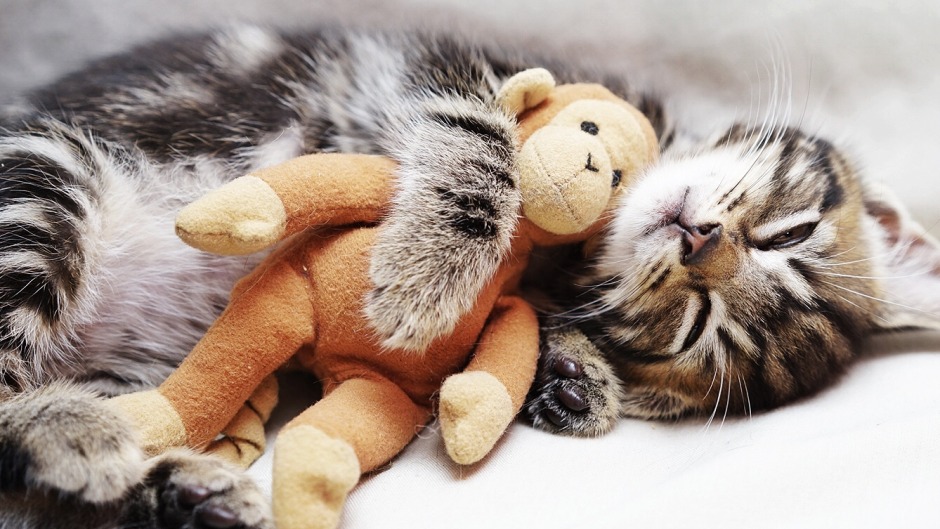
Anyway, I'm getting off topic. My point is this: Seven years ago, I wouldn't have dreamed of recommending any Sony camera to anyone. Today, they have created my main, go-to camera for pretty much everything (including video!). Think about that for a second: If that much can change in seven years... What is going to happen in the next seven years?
It's an exciting time to be a photographer, that's for damn sure.
Calling all London Time-lapsers
Time-lapses? They're awesome photos like this, except slightly more like those new-fangles 'moving pictures' we keep hearing about.
If you're a fan of London and of shooting time-lapse videos, don't miss this: Our good friend Nicholas Goodden (one of the top 100 most socially influential photographers in the world) is taking the helm on an awesome project: A one-day event where we are creating a love story to London, through the medium of time-lapse.
Sure, there's no shortage of time-lapse videos, but how many of those have you been part of? Well, here's your chance. Mark the 6 December in your calendar, and get yourself signed up.
'We've got a dozen photographers already signed up,' says Triggertrap's Head of Happiness Helena Vieira, 'and we'd love to get some more of you involved.'
Well, you heard the woman - sign up here!
The cool photo at the top of this story is (cc) Stephen Clarkson
Are photographs for humans?
Last month I was invited along to the inaugural EyeEm Festival & Awards. Among other things, I was on a panel on "The Camera of Tomorrow". I do quite a bit of panel-ing (is that a word?) but I'm unable to shake this particular one from my mind, because at some point, the discussion wandered into a topic that I haven't given much thought so far: Who actually consumes photography?
Are photos for humans or machines?
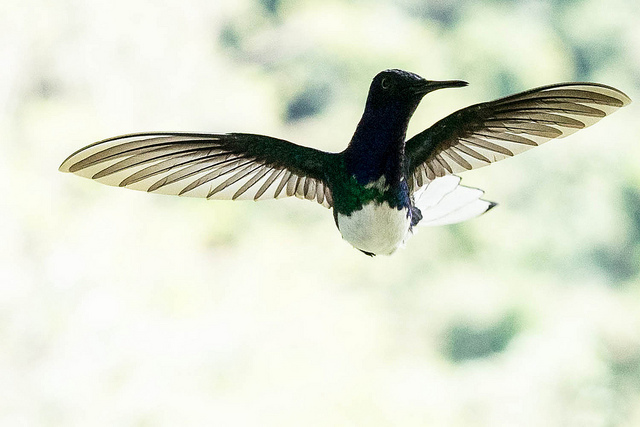
One of the big and scary ideas that came up was that the average photograph - or frames in a video, as may be the case - are no longer primarily for human consumption. As computers and image recognition becomes better, we now live in a world where even though if your photo is seen by 50 of your friends on Facebook, that very same photo will be seen by hundreds, if not thousands, of robots. Image recognition bots, facial recognition bots, localisation calculation bots, Google Images, scientific and statistical analysis bots... Who knows.
If you think about it: say you are a scientist who is trying to map the increase or decrease of water in a particular lake. You could install expensive equipment - but where would you get historical data? Well, if that lake happens to be a popular holiday destination that people tend to share photos of, you could actually do image-driven research: Photos taken on smartphones are tagged in the metadata by time and GPS location; Scrape the internet for photos taken in that particular location, then use image recognition software to estimate the water level in the lake. Science fiction? Nope - perfectly possible, and projects like this are already in action at universities and in commercial settings all around the world.
That's a relatively benign example: What about the data we put out there ourselves? That the trend of taking selfies is an incredibly powerful tool: By posting photos to Twitter, and describing (or even hashtagging) the photo as a 'selfie', it means that over the years, computers can start to map your ageing process, and potentially learn about the way that human faces tend to age. Add a layer of geo-location on top, and perhaps scientists will find that humans living near power stations have, on average, slower hair growth (just to pick an example). To a data scientist / statistician, the possibilities are absolutely mind-boggling.
Of course, there are less salient uses too: By posting selfies online, you're feeding an incredibly powerful facial recognition opportunity: Facial recognition based on a single photograph can be incredibly difficult (think about it: You're just a new pair of glasses, a baseball cap, or a beard away from looking very different from a single photograph). If, instead, one were to collect all the photos I've ever posted of myself online, you've got a huge amount of data: What I look like in different lighting situations, with a hat, with a beard, with glasses on, in the morning, in the evening, smiling, angry, moody... All of this is data that could be used to create a mathematical formula for what "I" look like. Feed that into a network of CCTV cameras (they say that you can travel from anywhere to anywhere else in London without ever stepping out of reach of a CCTV camera), and it's possible to track my every movement through my home city. Scary? Perhaps - but against that lens, it becomes all the much clearer that the chief consumer of imagery is, indeed, computers - and by sharing photos of ourselves, we're making it all a lot easier for whoever wants to track us around.
Is there anything machines can't do better than humans?
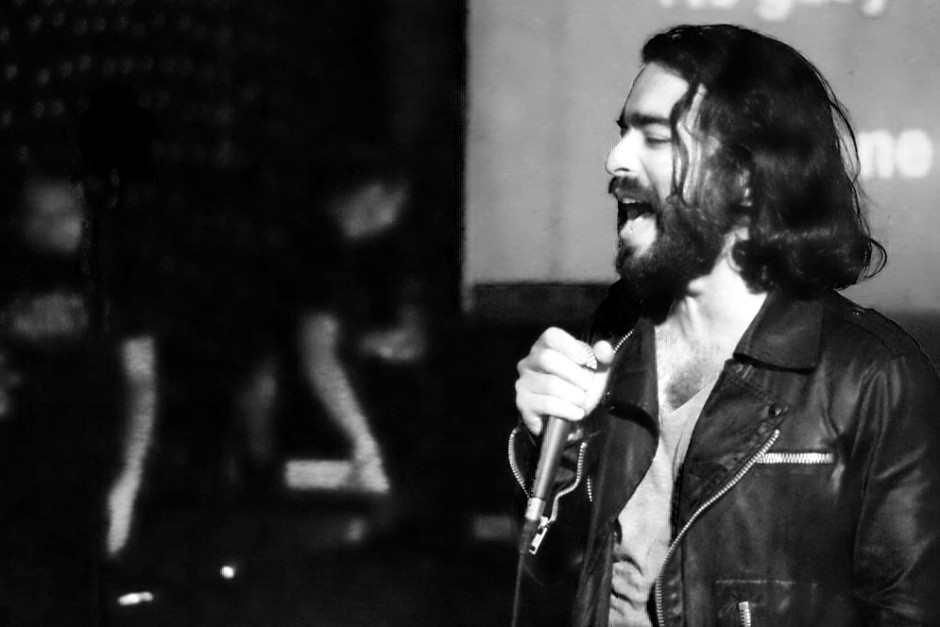
Ok, so we're being ruled by robotic overlords; what else is new... Is there anything humans can actually do better?
Of course, you can teach a computer to take photographs - it isn't even a very big challenge. A computer could even take some highly proficient photographs, technically: Focus, white balance, depth of field, colour saturation - even triggering the camera at exactly the right point in the process of taking a photo is all describable mathematically, which means that computers are rather good at it. In fact, when you think about it: Most of us heavily rely on computers already: Exposure light meters, automatic focus - they've been the computer-powered helpers in the world of photography for years, and we wouldn't want it any other way.
The other side of photography, however is trickier: The artistic side. This is where a recent XKCD comic hit the nail on the head:
Put simply, whereas a photo can be objectively 'bad' technically (Out of focus, motion blurring, white balance issues, exposure issues, wonky horizons, etc etc etc), deciding what makes a good photograph creatively can be very difficult to ascertain even to humans (Go on, give it a shot: See if you like / admire / understand why each of the top 10 photographs picked by Time magazine to be the best of 2013 were chosen. There is a recurring theme; more about that below).
Of course, what makes a 'good' photo is partially down to taste and cultural convention, but also down to a very difficult to answer question in general: What makes a good photograph? There are a few technologies that already exist to help people determine which photo in a burst of shots is 'best' tends to be limited to technical elements (From a set of 10 photos, pick the photo with the least camera blur, the least motion blur, and where people aren't blinking), rather than the aesthetic side of things.
But what about the story?
The other - and perhaps most important part - of photography is where machines truly fall short: Computers may one day be able to create photographs that are technically proficient and aesthetically pleasing, but the most powerful photographs are the ones that have a third layer: A story that's worth telling; a story worth listening to, and thinking about.
Every photograph that ever tugged at your heart-strings will have done so because it tells (part of) a story. In fact, the photo doesn't even have to be particularly creative or technically perfect - a slightly blurry photograph of your recently deceased grandmother could move you to tears - not because of the photograph, but because of the story it tells.
Ultimately, the story is all that matters; A technically perfect photo of a person is a photographic rarity, and may be interesting for that reason. If the lighting and setting is also great, you may be on to a good artistic photograph too. But the reason we identify with portraits is the stories they tell: Either because we (think we) know the person in the photo, or because we, as human beings, relate to something about the person in the photograph.
It may very well be the case that machines have overtaken humans as consumers of photography, but machines have a different purpose than humans: Computers see photographs as datapoints in an almost unfathomably large matrix of data. Humans see photographs as stories and memories. Maybe that's a thought worth taking with you into your next photo shoot - I certainly will.
What Gunther Oettinger, the EU’s new digital commissioner, thinks of the nude selfie situation
We didn't pass comment on the theft of nude photos of famous women here at Photocritic because... oh because what the hell did you expect us to say? We can't quite establish what makes us more incensed: the misogyny of threatening women with nude photos of themselves or the puritanism of suggesting that people shouldn't be able to share slightly risqué photos of themselves with their lovers. Only then does the neo-luddism of Joe and Jospehine Bloggs, spouted forth on the question of selfies—nude or otherwise—social media, hacking, and cloud storage come into consideration. So rather than raise our blood-pressure beyond what is necessary, we said nothing. However, now that Günther Oettinger has made a pronouncement on the situation, we can't contain ourselves. According to him, you see, it's all the victims' fault: they were stupid for placing their images online and there's no helping them.
If someone is stupid enough as a celebrity to take a nude photo of themselves and put it online, they surely can’t expect us to protect them. Stupidity is something you can only partly save people from.
There are plenty of people who take a similar stance to Oettinger: that personal responsibility is the crux of this matter. Much like one mitigates against car theft by parking in a secure place, locking your vehicle, and not leaving valuables on display, one doesn't upload sensitive information to cloud storage facilities where you're relying on other people to provide the security. Using the example of the Enigma, my grandfather taught me that if you can make something, you can break it, too. Nothing is thoroughly secure and thus to a degree I can understand this philosophy. It is, though, a question of calculated risk: much like I expect an airport parking service to keep my car safe when I'm overseas, I rather expect Dropbox to do its best by the back-up copies of my book manuscripts, too. If individuals aren't convinced by the efficacy of cloud storage they are within their prerogative not to use it. But Günther Oettinger is not Joe Bloggs and he's the sort of person who should know better.
Who is is Günther Oettinger and why should his comments create such outrage and consternation? Günther Oettinger is set to assume the post of EU Commissioner for Digital Economy and Society in November 2014. The expectations of the role were set out in a letter from Jean-Claude Junker (President of the European Commission) to Oettinger when offering him the post:
We must make much better use of the opportunities offered by digital technologies which know no borders.... You should set clear long-term strategic goals to offer legal certainty to the sector and create the right regulatory environment to foster investment and innovative businesses. You should also ensure that users are at the centre of your action.... You will also need to ensure that the right conditions are set, including through copyright law, to support cultural and creative industries and exploit their potential for the economy.
The person who is responsible for fostering innovation in and the expansion of digital technology, particularly with respect to business, across the European Union doesn't appear to have a clear understanding of the principles of cloud storage: how it works, how it is used, and what its potential is. Furthermore, he finds it appropriate to victim-blame those who've suffered the indignity of having their personal information splashed across international media.
It's an extraordinary comment from someone who is expected to advocate for digital solutions and development. Rather than claiming that someone is stupid for entrusting their sensitive data into the supposedly secure vaults of companies and expecting them to remain safe from prying eyes behind passwords and firewalls and whatever else they use—those same companies which have access to our credit card details whenever we spend money with them—it would have been better to recognise that a facility with so much potential also has its shortcomings and that perhaps working towards ensuring digital security was a priority for his office.
This isn't even behaviour that can be regarded as ostriching; it's an abrogation of his responsibilities and a remarkable display of ignorance pertaining to his office. We might need to be cautious and sceptical when it comes to sharing, storing, or spending our data, but he should be positive and creative about its possibilities. In the unlikely event that Oettinger reads this, I'd like to offer him some advice.
Whether you approve or not, the digital economy is a pandora's box that has been opened. Along with the threat of every type of cyber-crime from data theft and misappropriation to DDOS attacks comes untold and exciting potential. From Amazon to Apple, Facebook to Flickr, and Tesco to Twitter, people are spending more time and money online and using it to share and store more information as a consequence. In addition to the engineers and visionaries who choose to push this as far as they can take it, you're one of the people who's been appointed to harness the potential from this chest of wonders, not blame the general public when things go wrong, and none of this—the perils, pitfalls, and positives—are going anywhere. This is your job now: you need to get to grips with it.
For the rest of us: If it's any consolation, the man does have a teenaged son.
Adobe has acquired Aviary. Good or bad?
When I saw last night that image editing start-up Aviary had been acquired by image editing behemoth Adobe my initial reaction was 'Hmm. Great for the Aviary team; but I'm not sure it's so great for consumers.' Fifteen or so hours on from that, and my opinion hasn't changed considerably. I'd probably augment it with 'Smart move by Adobe.' Using the term 'start-up' to describe Aviary might not be entirely accurate, but it's a question of interpretation, I suppose. It has been around since 2007 and its code has been used to edit over 10 billion photos. Even if you don't use its smartphone app to adjust your images, you might well have come across its editing tools that have been built into platforms such as Flickr and Mailchimp using its software development kit.
Great for Aviary
If part of the definition of 'start-up' is the intention to see your company acquired by another one, then Aviary at least meets that criterion. Judging by Aviary CEO Tobias Peggs' effusive blog post announcing the acquisition, this is all their Christmases, Chanukahs, and Eids rolled into one. And that's even without the agreed fee being disclosed.
The Aviary offices are close to those of Behance, which was acquired by Adobe in 2013. Their proximity meant the Aviary people talked a lot with Scott Belsky, Behance's co-founder who now serves as Adobe's VP of Products and Community, and 'it became obvious that we shared a strong vision for mobile creativity. It became even more obvious that we should join forces, accelerate combined efforts and better serve even more app developers and even more people wanting to be creative on mobile.' Aviary is all about allowing people to be creative, through its own apps and through its SDK. It thinks it can better do this by partnering with Adobe.
Smart move by Adobe
Apart from Aviary's app being a peach and Adobe being keen to expand its mobile prowess, Aviary's SDK is well established. Adobe's isn't: it launched as a beta in June. According to Scott Belsky: 'We have high hopes for the Creative SDK and are thrilled that Aviary will infuse wisdom, technology, and reach to new developers.' Provided that the likes of Flickr, Mailchimp, and Shopify don't run screaming, Adobe has made a calculated acquisition to expand itself into a market where it didn't have a strong foothold. For anyone familiar with the English Premier League, it feels a little like accusations of Manchester City buying its way to football titles rather than building its own team. If you can't beat the opposition, buy it.
Not so great for consumers?
We know that I'm cynical; it says so in my Twitter bio. Thus from my cynical consumer standpoint, I wonder how beneficial this is for Aviary's users. The Aviary and Adobe teams are enthusiastic for what they can build together, but in trying to merge two company's visions into one coherent strategy how much creativity will be sacrificed and how much will consumer choice suffer? To what degree might smaller company 'Let's do this!' mentality be eclipsed by corporate hierarchy? Might Aviary become less accessible as it is absorbed into Adobe's Creative Cloud?
My visceral reaction is that while there are potential benefits to be harnessed from the acquisition, there are plenty of pitfalls, too. I'd like to be proved wrong. I hate the see a good thing fail and I really like Aviary.
However, whether Aviary was 'right' to sell or not isn't within my purview, not really. It's a company, it's not the NHS. It acts in its best interests, not mine. I wish them all the best.
Owning a camera doesn't make you a photographer; neither does a camera bag
I'm not certain how the tweet ended up in my Twitter timeline. I don't follow the company in question. Possibly it was as a result of Twitter's new-fangled algorithm that it implemented recently. It shares tweets with you that have been favourited by people whom you follow. However I came to read it, it left me feeling marginally despondent.
100% accurate. Who agrees!? #photography #cheekylime #camera pic.twitter.com/2mamXLTWBX
— Cheeky Lime (@CheekyLime) August 16, 2014
No my darlings. I don't agree. It's neither my camera nor my camera bag that makes me a photographer. It's me. I make me a photographer. I'm sure you did this with the best of intentions and you just wanted to draw attention to your range of camera bags with a quirky slogan and a pretty picture. However, you've overlooked an important detail: you've just denigrated the very people to whom you're attempting to sell your product. By suggesting that being a photographer is down to kit, you've ignored the skill and craft that photographers hone, the hard work that they dedicate to making each picture better than the last.
I suppose it's an easy mistake to make. Ask any photographer how often they've heard 'You're a photographer? You must have a really great camera!' and you'll be met with any combination of head-shaking, teeth-gnashing, or groaning and a reponse along the lines of 'Too many!' But as a company that's meant to work with and support photographers, it's terribly disappointing. I thought that you guys might've understood.
It doesn't matter which craft you practise—whether you're a photographer or a saddler or a dancer—the principal factor behind anyone's success is her or himself. It is about skill and dedication and a willingness to learn, to experiment, to try, to fail, and to try again. It's about a constant desire to improve. Kit? That's always way, way down the list.
What do football, copyright, and Vine have in common? A lot of money and a lot of confusion
The English Premier League kicks off tomorrow and in addition to last minute transfer news, shock managerial sackings, and managerial press conferences, copyright and broadcasting rights and the use of tablets inside Old Trafford have made headlines, too. The issue of tablets and laptops inside Old Trafford is fairly self-explanatory: Manchester United has prohibited bringing them inside the grounds owing to security reasons. The copyright issue seems to have people in more of a flap. And heavens, this isn't the first time it's happened. The Premier League has stated that it will be taking action against people who compile and share Vines of goals that they record from live broadcasts of matches. Being able to live-pause broadcasts makes this relatively straightforward technologically, but it's a breach of copyright.
This has thrown up a few interesting questions, not least from the BBC's Technology Correspondent, Rory Cellan-Jones, who wondered if his Google Glass recording of Brentford matches would violate copyright.
https://t.co/TIbfR6kft6 Now worried about my Brentford through Google Glass video - am I in copyright trouble?
— Rory Cellan-Jones (@ruskin147) August 15, 2014
I'm fairly certain it wouldn't violate copyright, but it could well infringe on other rights. So if everyone will be please calm down, and preferably sit down, I'll explain what (I think) the situation is.
Copyright
Copyright is the right to make copies of someone else's creative endeavours. When I click the shutter on my camera, I own the copyright to the image that creates. When BT Sport or Sky Sports record and broadcast a football match, they own the copyright to the broadcast. That is, the producer decides on which cameras to use and how to put together their sequence of use, which constitutes the original work. The football match itself isn't copyrightable, it's the broadcast of it that is.
As well as charging their subscribers a fee to watch the matches, BT Sport or Sky Sports can charge other broadcasters to use these images or they can keep them all theirselves. Their pictures; they decide.
When someone sitting at home on the their sofa and watching a football match compiles a Vine of the goals using pictures transmitted by BT Sport or Sky, they're violating BT Sport's or Sky's copyright. They are taking BT Sport's and Sky's work and using it without permission and without paying for it.
When you read that BT Sport and Sky Sports are complaining about their copyright being violated, this is what they mean.
Broadcast rights
When BT Sport and Sky Sports won the contracts to televise Premier League matches, they paid an excruciating sum of money for broadcast rights, or the opportunity to transmit live pictures from the game. The BBC holds the broadcast rights to highlights of the Premiership matches. They paid a fair whack for that, but not quite as much as BT Sport and Sky Sports. This season The Sun and The Times have the online rights; this is big business and it's this money, paid to the Premier League, which has made it into the financial behemoth that it is.
Turning up at Old Trafford or Stamford Bridge and taking photos or video of a match would get you into a different type of trouble, therefore. If you were to try to stream the match live from your seat, you wouldn't be very popular with a gaggle of corporate lawyers for infringing on broadcast rights. Not to mention you'd likely upset the fans sitting around you if you obstructed their view. Whether or not you can take a camera into a football stadium and take some photos for personal use seems to be open to clubs' interpretation. It's worth checking what it says on the ticket. Some might be happy for you to take a photo to remind yourself of the day; others might want to throw you out for just having a camera.
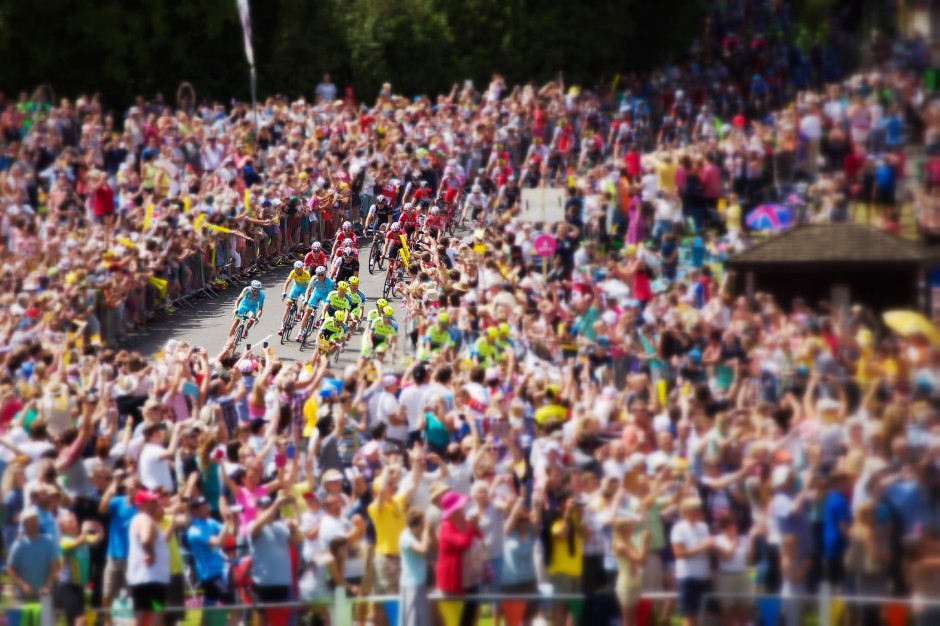
Broadcast rights and copyright are different beasts, but from the same genus. You'd own the copyright to any images you were fortunate enough to make inside a stadium, because you'd made them. What you wouldn't own are the broadcast rights to let you redistribute them. Not unless you'd paid an eye-wateringly large sum of money for the privilege and you probably don't have enough kidneys for that.
Performers' rights
Back to Rory Cellan-Jones and his tweet asking about copyright violations at Brentford, someone asked if it wouldn't breach performers' rights. No. As far as I can tell, performers' rights don't extend to sporting events, at least not in the UK, so there would be no infringement there.
Tablets
Now we get onto Manchester United's prohibition against tablets and laptops inside Old Trafford, which was announced earlier this week. According to officials there, the decision to ban larger devices, including iPad Minis, was made in response to security concerns. They're worried someone might want to pack a bomb into a device, much like airlines are. The ban doesn't extend to smartphones, provided that their dimensions are no larger than 15 centimetres by 10 centimetres (5.9 inches by 3.9 inches). Seeing as smartphones have not been banned and they're still capable of taking photos, we'll take this one at face value. And quite frankly, if it stops people obscuring others' view with when they're recording with the iPads, so much the better.
In conclusion
Please remember that I'm not a lawyer. I'm a writer who takes a fiendish interest in copyright and I've applied a healthy dose of common sense to its ramefications, together with a bit of research.
If you want to take photos or video at any sporting event, I suggest that you check with the stadium before you turn up with any manner of kit. You don't want to forfeit your ticket or have your gear confiscated. Speaking from experience, just go and enjoy the game. Fiddling about with electronic equipment detracts from the atmosphere and what's happening in front of you - the reason why you're there. But maybe that's for another article.
When it comes to making Vines from what you can see on TV - don't. Protecting intellectual property applies to little guys as much as it does to big guys. If we don't want them stealing our content from social media sites and using it for free, best not to infringe their copyright either.
Just because you found it on the Intergoogles it doesn't mean it's free to use
I was having a fairly good morning, until I took my lunchtime peruse of Feedly to see if anything interesting or exciting had dropped into it. Apart from a new post by my favourite film critic, nothing was outstanding until I reached Lifehacker. The Lifehacker team has just posted a link to a visual media usage rights flowchart created by The Visual Communication Guy. Excellent! Ignorance is no excuse when it comes to image theft and unauthorised use and reproduction of photos. While we're all perfectly aware that when you place something on Facebook, Flickr, or your personal version of Frankie's Funky Photos, there's a real chance that someone will try to use it improperly, the more that we can educate people about the right way to do things, the better. This one, however, was not quite so excellent.
You'll find the original here and the Lifehacker article here.
Apart from the fact that it's far too dense and word-heavy, it contains at least one humongous, glaring, verging on the unforgiveable fault for something that purports to advise on usage rights. Take a look and tell me if you can see it. (And tell me how many others you can see. There are plenty.)
Found it?
If you haven't, because it's a horrid thing to read, here it is:
While the laws about distributing images through social media channels like Facebook, Pinterest, and blogs are still fuzzy, it is generally considered acceptable to redistribute an image that was intended to be viewed publicly by the creator. This is why you will typically find original images re-posted on blogs, news sites, and social media channels even if the person re-distributing the images didn't receive permission to do so.
No, no, no, no, no, no. And for good meaure I'll say it again. No.
Images that are shared on social media aren't free for redistribution unless the creator has expressly said so. I put my images on Flickr and use them here on Photocritic and put them on my personal website to display them, to illustrate concepts, to tell stories. I do not put them on the Intergoogles so that anyone else can make use of them. And you should never assume that anyone else does, either.
The law regarding this is hardly fuzzy about the situation, either. There's been at least one monumental court case that supports this opinion, when photographer Daniel Morel sued AFP and Getty Images after they redistributed his images from the Haitian earthquake, which he'd shared via Twitter, without his permission.
Copyright exists from the moment that someone creates something, whether it's a photograph, a tune, a poem, or a piece of prose. It doesn't matter how a creator wishes to share her or his creation with the world, unless she or he has definitely signed away the rights to it, the rights remain theirs.
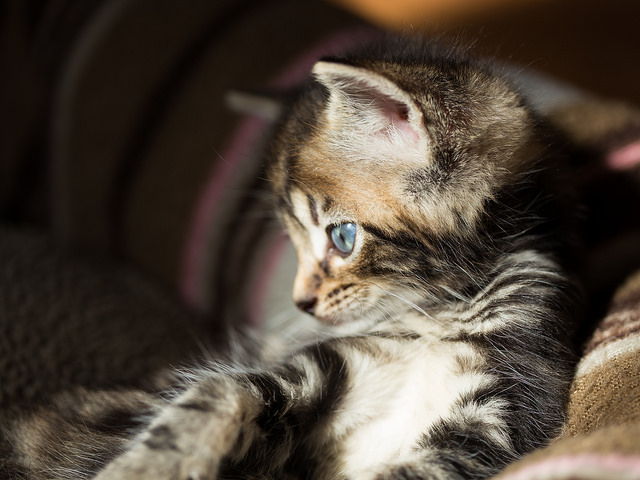
To be fair to the Visual Communications Guy, he does state 'My rule above all else? Ask permission to use all images. If in doubt, don’t use the image!' in the post that accompanies the flowchart, but that's not really good enough. It's the flowchart that people are going to share and see, not the article. When incorrect information such as this gains traction, we all suffer. Suddenly what's not right becomes commonly accepted. Or people who were doing their best to not be ignorant are in the wrong when they thought they were doing right.
So I'll say the mantra and everyone can repeat it after me: 'Just because I found it on the Internet, it doesn't mean it's free to use.'
Is the new Pentax Q-S1 all fur coat and no knickers?
When the press release for Ricoh's newest camera fell into my inbox yesterday, I felt overcome by a sense of deja-vu as I scanned down it. The specification for the Pentax Q-S1, a pocket-sized EVIL camera, seemed very familiar: 12 megapixel 1/1.7" CMOS sensor; ISO 12,800, 5 frames-per-second; DR II dust removal mechanism; and Eye-Fi wireless LAN SD memory card compatibility. Isn't that the Pentax Q7 in all but name? Looks-wise the Q-S1 didn't appear exactly ground-breaking either. That might sound contradictory for a camera that comes with five different body colours (black, gunmetal, pure white, champagne gold, bright silver) and eight grip colours (charcoal black, cream, carmine red, canary yellow, khaki green, royal blue, burgundy, pale pink), but Pentax is famed for its swap-shop approach and the design is making the retro-but-not overtures that feel almost inescapable right now. It has very similar dimensions to and weighs almost the same as the Q7.

Try as I might, I couldn't pin-point any significant differences, save for the physical appearance, between the Q7 and the Q-S1. The Q-S1 is supposed to have a slightly improved auto-focusing system and has updated filters, but that's about it. Improved autofocus is always appreciated and quite frankly I can take or leave filters and toys, but I'm still scratching my head. What's the point of the Q-S1?
If Ricoh is of the opinion that the Q-S1 is there to offer consumers more aesthetic options and choices, that's a grimly disappointing approach to selling cameras. I admit that I have been known to go weak at the knees owing to the sumptuous design of a camera on occasion, but I part with my money because of their guts and performance. Cameras are tools, not fashion accessories and what truly interests me are technological developments that make a difference. Dressing up the Q7 with its tiny sensor that suffers from noise issues won't make it a better camera.

I'm desperately hoping that camera buyers aren't so superficial that everything rests of the look of the box that lets in light and not how well it allows the photographer to control and manipulate that light, or how well it records that light. I can't be sure but I blinking well hope that isn't the case.
So Ricoh and the Pentax people who work there, if you're listening, I'm sure that you can do better than this. There's the Pentax 645D on your roll, after all. And people who buy cameras: it's about making beautiful things, how your magical picture-making box looks isn't all that important. Not in the grand scheme of things.
Flickr has announced Curated Connections, but what exactly is it?
When Flickr and Getty announced earlier this year that they'd not be renewing their licensing deal, I suggested that it might not be long before Flickr unveiled its own in-house licensing project. With well in excess of five billion images on its servers, Flickr has a huge stock library waiting for exploitation: easy sales for Flickr users and a cut for Yahoo! is a win-win situation. We had a four-and-half month wait for the grand reveal: today, Flickr announced its Curated Connections project. Well, I say it was a grand reveal, it was more of a swift overview.
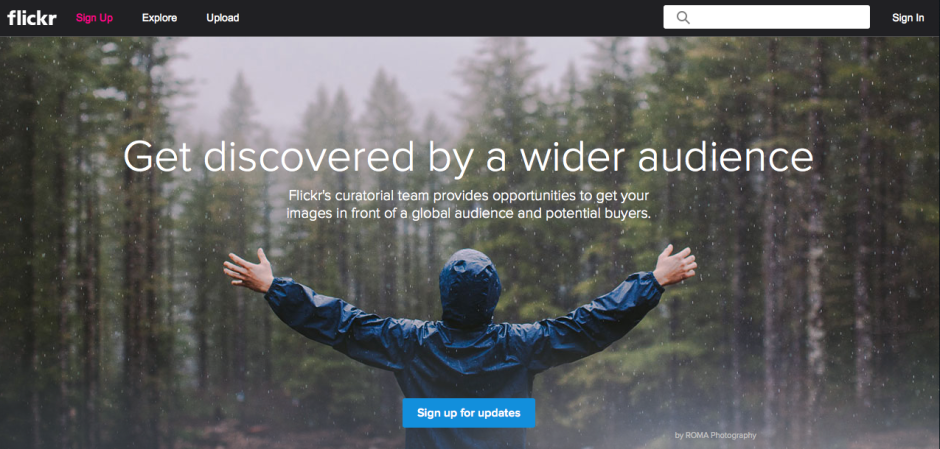
What is Flickr offering photographers who sign up to the Curated Connections project? It's a good question that doesn't have an especially solid answer, for the announcement is curiously light on specifics. The Flickr blog post tells us that they are: 'excited to introduce a new way for you to partner with photo agencies, editors, bloggers and other creative minds who are seeking original content like yours.' But there's no indication of what this new system is or how it will operate.
Flickr's curatorial team will be there to 'provide assistance, outreach and connectivity to help you get your photos licensed!' But it doesn't detail what this will entail. It's hardly surprising that with such a vague outline of what they're planning there isn't any significant information concerning such trivialities that interest photographers, namingly licensing terms. We're told that they'll be transparent and easy, although as things stand the terms remain mythical beasts.
The sign-up page tempts users with suggestions that their images might be used by media behemoths including the BBC, Gizmodo, the New York Times, and Reuters. There's even a mention of previous licensing-partner Getty. As you might expect from a Yahoo! owned company, there is potential for your images to be used on other Yahoo! owned, sites, too. Part of the 'outreach and connectivity' that Flickr hopes to offer are opportunities to complete commissions and assignments. Flickr's definitely talking the talk here.
Being able to share your images and make them available for licensing in one place is appealing—and it's something that other photo-sharing sites, for example 500px and EyeEm are also beginning to entertain—but so much of that appeal is going to depend on how the deals are cut and the terms under which images are released. Allowing Flickr to deal with the tedium of bureaucracy might not be suitable compensation if the remuneration is insufficient. Will it walk the walk?
 Can we have a baked and iced cake, please, Flickr? It beats a half-remembered recipe.
Can we have a baked and iced cake, please, Flickr? It beats a half-remembered recipe.
So do tell us, Flickr: what exactly are you proposing here? There's a lot of ethereal chatter and not much substance. I'm sure that you're excited by your new project and you want us to be excited about it, too, but it rather helps if you share with us the pertinent facts. It's something of a half-baked non-announcement at the moment. We've no idea if the cake's carrot or chocolate or something else entirely. Provide us with an actual announcement that you've baked and iced and we might be slightly more enthusiastic. Or not. Depending on what you suggest (I prefer lemon, for reference).
If you are interested in Flickr's Curated Connections, you can sign up here.
The unlikely and serious consequences of teenage sexting
An 18 year old and a 19 year old are in a relationship. They're committed to and respectful of each other. They enjoy consensual sex and every now and again they share a naughty photo. A 16 year old and a 17 year old are in a relationship. They're committed to and respectful of each other. They enjoy consensual sex and every now and again they share a naughty photo.
What's the difference? Both couples are over the age of consent and no one is being forced into doing anything they do not wish to do. Yet the younger couple is breaking the law. By sharing photos of themselves, they're distributing indecent images of children. They are, of course, under the age of 18 and therefore still children. That they are accustomed to each other's bodies in the flesh means nothing when they're pixillated.
The penalty for distributing indecent images of children is much more serious than a slap on the wrists, too. It can result in being placed on the sex offenders' register. For anyone, that is a life-altering punishment; for someone who is 16, it could be life-ruining.
This issue has been brought into the public consciousness again (it raised its head towards the end of last year) after Nottinghamshire Police sent a letter to schools in the county asking them to advise their pupils about the potential consequences of 'sexting'. Recently, the police have dealt with several cases where sexting has taken a turn for the nasty, and while they've not prosecuted the young people involved, the outcome could have been different.
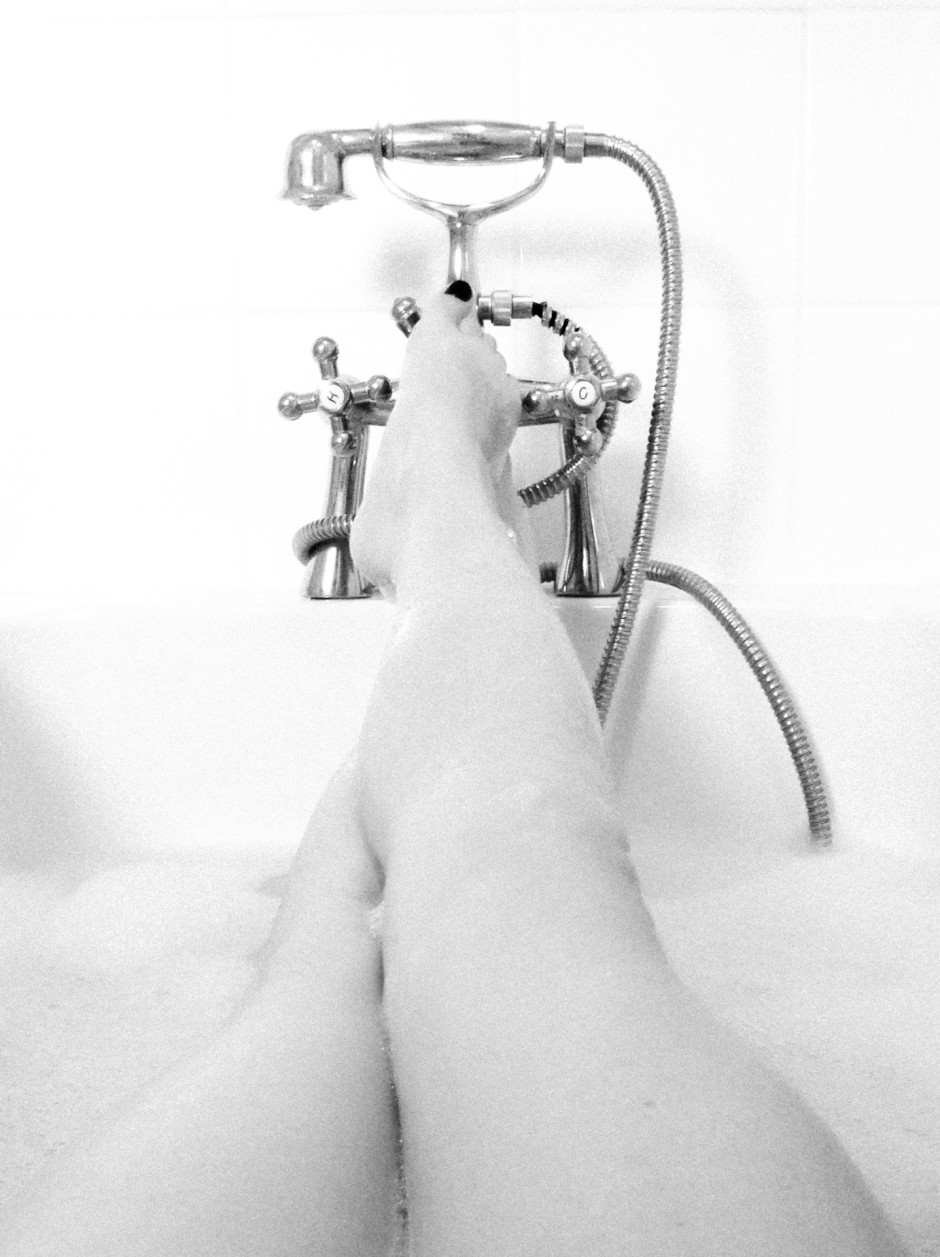
Much of what I've been reading around this topic today—for it seems to be overtaking the BBC—involves admonishing young people not to be so stupid or to consider the consequences of their actions should these photos make their way onto the Intergoogles; invokes despair that young people are capable of such recklessness and disregard for other people's feelings and reputations; or it criticises their lack of self-respect and gutter behaviour. There's also a great deal of concern about the pressure that might be applied to young people to take and share lascivious photos when they really don't want to.
Some of these concerns are valid. The teenaged equivalent of revenge porn can be deeply painful and horribly humiliating with tentacles that spread much further than school. While its perpetrators might be content to wreak harm and havoc on those whose images they share, I doubt that they realise just how extensive the consequences can be. As for coercing young people into sharing pictures that they probably wouldn't want to show their parents; it's another of those pressures of conformation piling up on young people: to be thin, to wear particular clothes, to smoke, to drink, to have sex. Between Snapchat and Slingshot and WhatsApp and any other means of sharing an image, we have for ourselves the social media age incarnation of 'I'll show you mine if you show me yours,' behind the bike sheds, except with potentially longer-lasting and farther-reaching consequences.
We cannot and should not tell young people what to do; it's about giving them the skills, the self-confidence, and the information to make their own choices and about providing them with non-judgemental support when they have to live through it. Vilifying them for a lack of self-respect is unlikely to achieve very much.
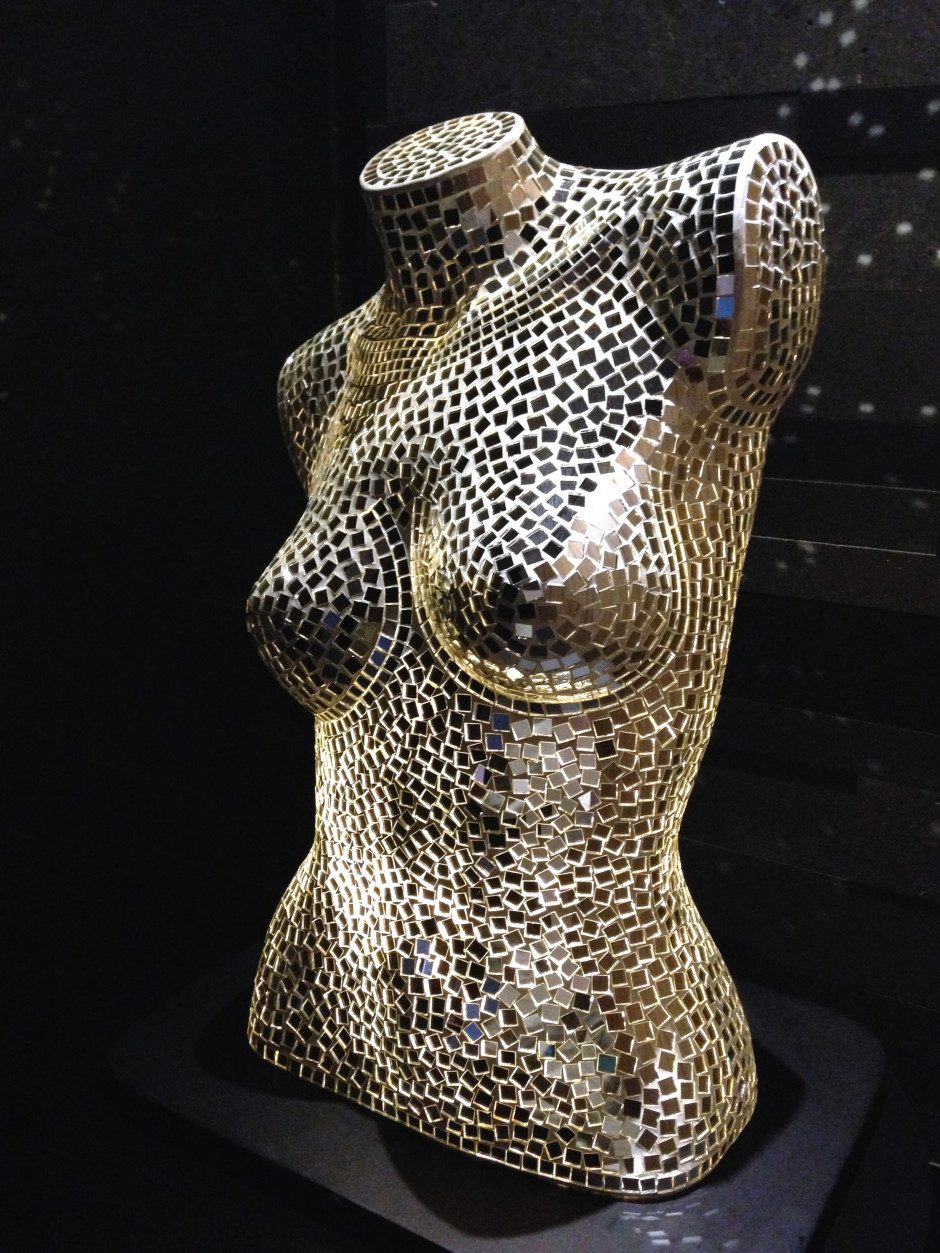
These are all pertinent points for anyone under 16 who's legally regarded as not being able to give consent. Indeed they remain valid for anyone over the age of 16; but there's a particular issue relevant to 16 and 17 year olds that seems to be overlooked.
There's a disconnect between the legality of their engagement in consensual physical sexual activity and the illegality of recording that same consensual physical sexual activity. A law that's designed to protect young people from exploitation has the potential to criminalise them. I hope that those who have to enforce it apply some common sense to any situations that come their way.
The Nokia Lumia 630's magical photo-improving screen
I wasn't paying attention; it was an advert. But when I heard the words 'And with its big screen, even my photos look fab!' my ears pricked up. Did I actually hear that correctly? It took another few advert breaks to establish that my aural capabilities were not deceiving me and some marketing team somewhere was touting at least one major feature on a smartphone as a screen that's sufficiently large to ensure that poor photos look good. Insert a mildly despondent sigh here. In terms of marketing hyperbole, it does make a welcome change from the might of the megapixel, but I'd prefer a claim that had a ring of credibility to it at least. Logic dictates that a bigger screen won't make an out-of-focus, badly exposed photo look better. It will just make it look bigger. And the out-of-focus-ness more out-of-focus.
What is this smartphone with the magical photo-improving screen? It's the Nokia Lumia 630. You can check out the statement for yourself. It comes at around 15 seconds.
Sorry sweetheart, I don't want to burst your new purchase bubble, but the size of the screen on the Nokia Lumia 630 isn't going to improve your photos if they're already not terribly good. You're responsible for that. Go out, take more photos, think about the composition and the lighting, take more photos, and apply what you've observed. That'll make your photos look better, because they'll be better. Photography's a skill that can be improved with practice and evaluation. Trust me.
As for the marketing team behind the Lumia 630, please don't try to convince people that there's a technological solution for everything. Some improvements require effort and application. I know that might seem awfully old-fashioned and not necessarily fit with the image you're attempting to promote, especially in our increasingly visual society that appreciates immediate advancements, but there's only so far your phone can go. Oh, and lay off the gender-stereotyping, too. Women the world-over, and a great many men, will thank you for it.
Jumping on and off of Dropbox's Carousel
Yesterday, the cloud storage company Dropbox announced its 'Home for Life' initiative, making Dropbox a service that can 'take pain away from technology so you can do more with your life.' Part of that package is Carousel, a photo and video gallery that combines your Dropboxed images with those on your phone in one accessible, beautiful place. When you have downloaded the app, it backs up your mobile photos, and automatically backs up new ones, before sorting them—and those previously stored in Dropbox—into a chronological gallery. There's also the option to share hundreds of images quickly and simply via 'private conversations'.

The 'Home for Life' idea is about simplicity, and for Dropbox that means taking care of your photos in a fuss-free way as possible: 'And unlike other mobile galleries, the size of your Carousel isn’t constrained by the space on your phone, which means you can finally have your entire life’s memories in one place.' No, it's just constrained by the size of your Dropbox account. And with Dropbox being one of the more pricey cloud storage options out there, this could become expensive quite quickly. It's fuss-free, but at a price.
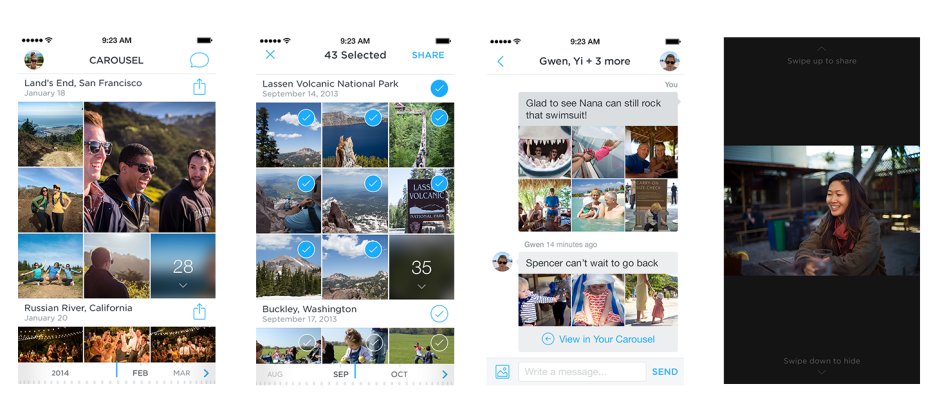
I love Dropbox. I use it every day. But not for photo storage. Its cost is prohibitive and despite the convenience and good looks of Carousel, it makes more sense for me to use Google+ to back-up my mobile images and Dropbox to store and share documents. When I'm able to auto-upload an unlimited number of standard-sized images (so that's 2048 pixels along the longest edge) from my phone to Google+, or full-sized ones at Google's much cheaper storage rates, it just doesn't make sense to use up my valuable Dropbox space.
If you're uncertain of entrusting your photos to Google, Flickr has an auto-upload feature in iOS 7 and it'll take you quite some time to burn through its terabyte of storage. Or there's Microsoft's OneDrive, which has an auto-back-up feature, too.
Dropbox has made a valiant attempt with Carousel to create a service that sets it apart from its competitors, with a swish interface and direct sharing options, but I'm not convinced that they offer me enough to justify the outlay. I won't be downloading right now. But I'm not you, and if you think it's what you're after, pay a visit to the Carousel website.













